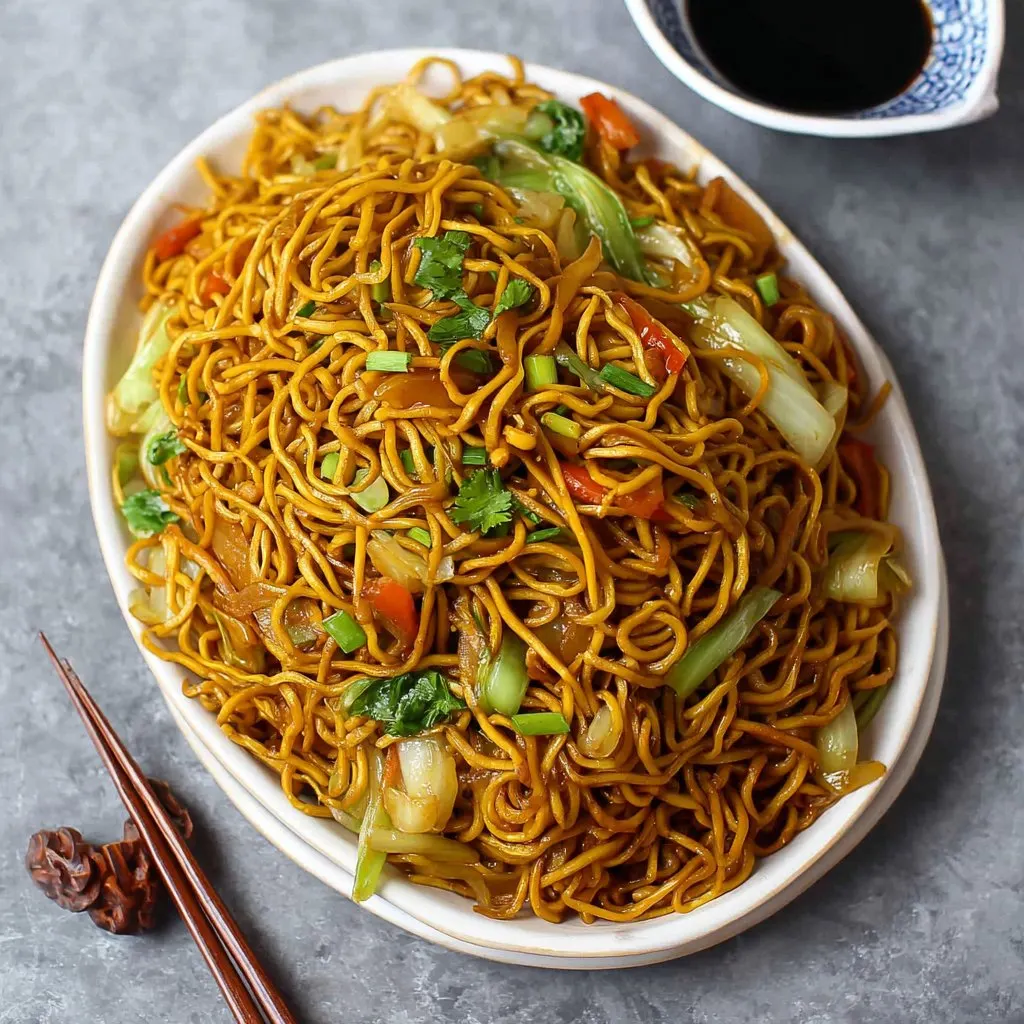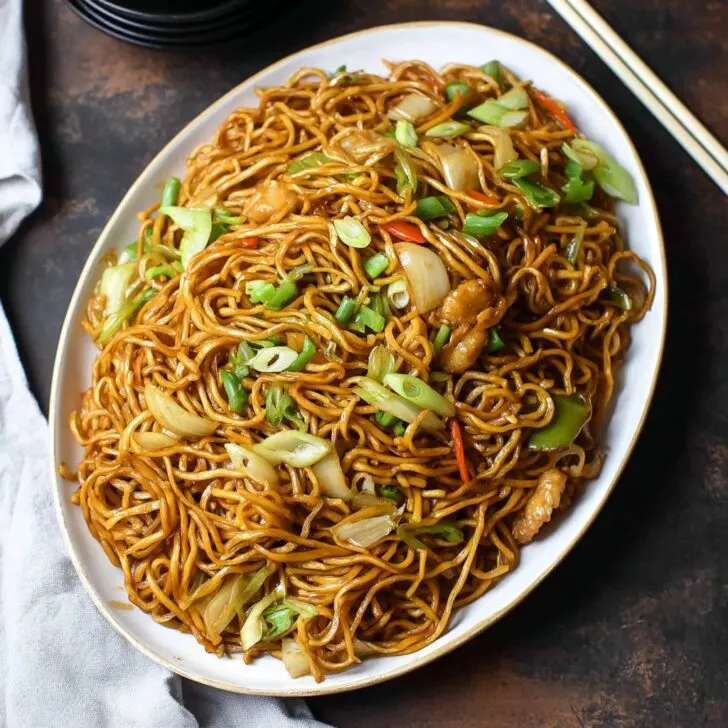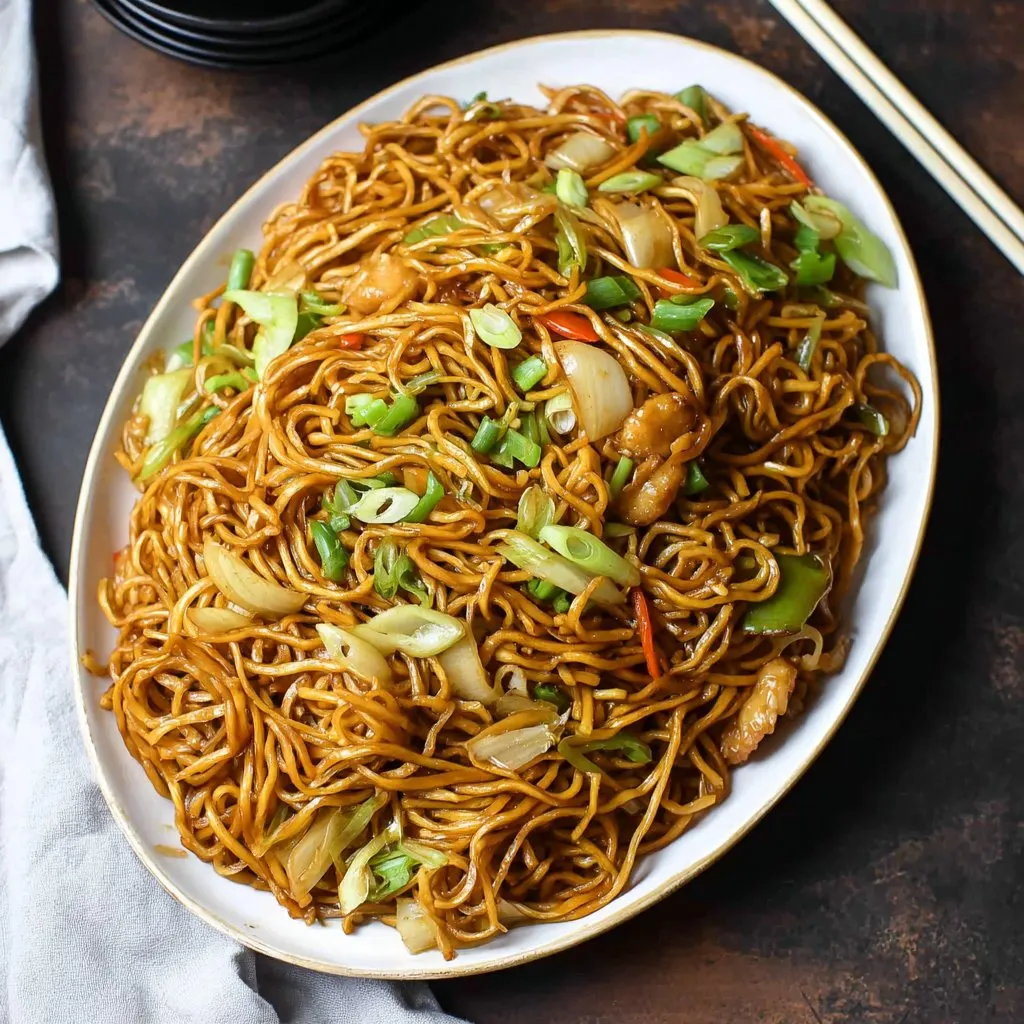So, Here's Why I Can't Stop Making This Chow Mein
Alright, so let me set the scene: it's a drizzly Tuesday, the fridge is looking like a barren tundra (except for the sad, prewashed stir-fry kit and that stubborn bit of ginger that's been lurking for weeks), and the only thing my kids want is Panda Express Chow Mein. Again. I used to just order it—super convenient, right? But then, one fateful night, delivery took over an hour, and I thought, "Honestly, I could've cooked it myself by now." So I did. And, well, here we are. Now this copycat chow mein makes a regular appearance at our dinner table. No, my wok skills aren't restaurant-level (still working on the noodle flip), but everyone goes back for seconds, so I must be doing something right. Plus, it always smells like you’re about to have a good time once that garlic hits the pan.
Why You'll Love This Chow Mein—Trust Me
I make this when I'm craving something carby but sorta veggie-filled (I mean, there’s cabbage, so it’s basically health food, right?). My family goes absolutely wild for this, especially since it tastes just like the stuff you'd get at the mall—except you can sneak a few extra veggies in without anyone noticing. Sometimes I do this for lunch just for myself and eat it straight from the pan. Oh, and if you’ve ever felt like your noodles get clumpy or sad, you’re not alone—took me ages to nail that part. But, on second thought, a little noodle clump never ruined anyone’s dinner.
What You'll Need (and What I Substitute When I'm Lazy)
- 400g (about 14oz) yakisoba noodles (or ramen noodles—I've even used spaghetti in a pinch. My grandmother would probably gasp, but, honestly, any noodle works if you're desperate!)
- 2 tablespoon vegetable oil (or peanut oil—olive oil if that's all you've got, though it’s a bit strong)
- 3 cloves garlic, minced (sometimes I get lazy and use a spoonful from the jar stuff—no shame)
- 1 small onion, sliced thin (yellow, white, or a random shallot if that's what’s lurking around)
- 2 cups shredded cabbage (bagged coleslaw mix is a total lifesaver here)
- 1 cup celery, sliced thin (I once used bok choy stems and nobody noticed)
- 3 tablespoon soy sauce (low sodium, dark, or whatever’s in your fridge. Kikkoman is my go-to but, really, up to you)
- 1 tablespoon oyster sauce (or vegetarian mushroom sauce if you swing that way; I sometimes skip it and just use more soy, not quite the same but still tasty)
- 1 tablespoon hoisin sauce (optional, but I think it makes it taste more like takeout)
- 1 teaspoon sugar
- ½ teaspoon black pepper (freshly ground if you can be bothered)
- 2 green onions, sliced (or skip if you hate green things)
Here's How You Actually Make It (Chaos Included)
- Prep the noodles: If you’ve got yakisoba, just separate them by hand (toss out the seasoning packet unless you like chaos). For dry noodles, cook them just until al dente—don’t overcook, or you’ll get chow mush. Drizzle with a bit of oil, so they don’t stick while you’re sorting out the veg. Actually, I find it works better if you do this step first and let the noodles cool; less stickiness.
- Heat the oil: Big frying pan or wok—doesn’t have to be fancy. Medium-high heat. Toss in the garlic; once it smells amazing (about 30 seconds), add the onion and celery. Stir it around until the onion gets a bit see-through. This is where I usually sneak a taste, as if one bite will tell me anything more than "yep, still onion."
- Add the cabbage: Throw it in and stir-fry till it starts wilting. Don’t panic if it seems like a mountain—it shrinks fast. If any pieces leap out of the pan, just pretend it’s intentional.
- Make the sauce: Mix up soy sauce, oyster sauce (or your swap), hoisin, sugar, and pepper in a mug or whatever’s handy. Pour it all in with the veggies—you’ll see the color darken and the smell gets even better.
- Add the noodles: Get them in there (tongs help, but clean hands will do in a pinch). Stir-fry everything together for about 2-3 minutes. Don’t worry if some veggies look a bit charred—that’s flavor! If it seems dry, splash in a tablespoon of water or two.
- Finish: Toss in green onions at the end. Give it a taste—add more soy if you want. And yes, you’re allowed to eat it straight from the pan. Who’s judging?
Notes from the Frontlines (AKA: My Kitchen)
- One time I tried making this with only cabbage and it worked, but my kids gave me the look. You know the one.
- If you like things spicy, a squirt of sriracha at the end is chef’s kiss—though I keep it on the side for the spice wimps (sorry, Mom).
- If your noodles clump, just use a fork to tease 'em apart. Or eat the clumps. Honestly, it's all good.
Things I've Tried (Some Better Than Others)
- Add protein: Leftover rotisserie chicken, tofu cubes, or even shrimp. All good—just throw them in with the veggies.
- Try different sauces: Once swapped hoisin for teriyaki. Wasn't quite the vibe I wanted, but still edible!
- More veg: Bell peppers, snap peas, or broccoli florets. Sometimes the kids fish them out, but I feel virtuous for trying.
What You Need to Cook This (And What to Do If You Don’t Have It)
I always use my trusty wok (got it cheap at Target, nothing fancy). But honestly, a big frying pan does the job. I’ve even used a deep pot in a pinch. Tongs are handy for tossing noodles, but if you don’t have ’em, two big forks work. Or just go wild and use clean hands—but maybe wait till it cools a bit. If you want a nice, sharp knife for slicing veg, I like the ones recommended over at Serious Eats.

How to Store It (Not That It'll Last Long)
Pop leftovers in an airtight container and stick it in the fridge. Should be good for 2-3 days—though honestly, in my house it never lasts more than a day! If you’re reheating, a quick zap in the microwave with a splash of water works. Or toss it back in the pan for a couple minutes. I think it tastes even better the next day, but I may be weird.
How I Love to Serve It (And the Odd Tradition)
I usually heap this into big bowls and serve with a side of egg rolls (sometimes homemade, sometimes straight Trader Joe's—no shame!). Sometimes we do family-style, with everyone grabbing their own forkfuls straight from the pan (less dishes!). For a little extra zing, I put out chili oil or that garlic chili sauce. Oh, and cold leftover chow mein for breakfast? Don’t knock it till you’ve tried it.
Things I Wish I'd Known (Pro-ish Tips)
- Don’t rush the veg—once I tried cranking up the heat and ended up with burnt onions, raw celery, and a kitchen full of smoke. Slow and steady is better.
- If your noodles stick, toss them with oil before starting—learned this the hard way after prying noodles off the pan like glue.
- Actually, if you add the sauce too early, it soaks into the veggies and noodles get a bit bland. Patience, grasshopper.
Real-Life Questions People Have Thrown at Me
- Can I use different noodles?
- Sure—ramen, lo mein, even spaghetti if that’s what you’ve got. It won’t taste exactly the same, but it still hits the spot.
- Is oyster sauce necessary?
- Honestly, not really. I think it adds depth, but sometimes I skip it and just use extra soy sauce. Tastes fine—just not as "Panda Express-y."
- How do you keep the noodles from sticking?
- Toss with a little oil before you stir-fry, and use a big enough pan. Sometimes, though, you just gotta embrace a little stickiness.
- Can I freeze this?
- I don’t recommend it—noodle texture gets weird. But if you must, freeze in single portions and reheat gently.
- What can I do if I don’t have a wok?
- No worries! Frying pan, Dutch oven, or even a big pot works. Wok is fun, but not a dealbreaker. You got this!
- Why does mine taste different form Panda Express?
- Well, for starters, no MSG at home (unless you add it—no judgment here). Also, each kitchen’s got its own magic. Just roll with it!
If you want a visual, I still swear by this video from Souped Up Recipes—her stir-fry technique is way better than mine, but you’ll get the idea.
So there you have it—my not-so-perfect, but very tasty, Panda Express Chow Mein at home. Let me know if you try any wild variations! Or if you find a way to keep leftovers around longer than a day, tell me your secret. Cheers!
Ingredients
- 12 oz chow mein noodles or yakisoba noodles
- 2 tablespoons vegetable oil
- ½ medium onion, thinly sliced
- 2 stalks celery, sliced diagonally
- 2 cups shredded cabbage
- 3 tablespoons soy sauce
- 1 tablespoon oyster sauce
- 1 teaspoon sugar
- ½ teaspoon sesame oil
- ¼ teaspoon ground white pepper
Instructions
-
1Cook the chow mein noodles according to package instructions, then drain and set aside.
-
2In a small bowl, mix together soy sauce, oyster sauce, sugar, sesame oil, and white pepper to make the sauce.
-
3Heat vegetable oil in a large skillet or wok over medium-high heat. Add sliced onions and celery, and stir-fry for 2-3 minutes until slightly softened.
-
4Add shredded cabbage and continue to stir-fry for another 2 minutes until vegetables are tender-crisp.
-
5Add the cooked noodles to the skillet, pour in the sauce, and toss everything together for 2-3 minutes until the noodles are evenly coated and heated through.
-
6Serve hot as a main dish or side, garnished with extra green onions if desired.
Approximate Information for One Serving
Nutrition Disclaimers
Number of total servings shown is approximate. Actual number of servings will depend on your preferred portion sizes.
Nutritional values shown are general guidelines and reflect information for 1 serving using the ingredients listed, not including any optional ingredients. Actual macros may vary slightly depending on specific brands and types of ingredients used.
To determine the weight of one serving, prepare the recipe as instructed. Weigh the finished recipe, then divide the weight of the finished recipe (not including the weight of the container the food is in) by the desired number of servings. Result will be the weight of one serving.
Did you make this recipe?
Please consider Pinning it!!


